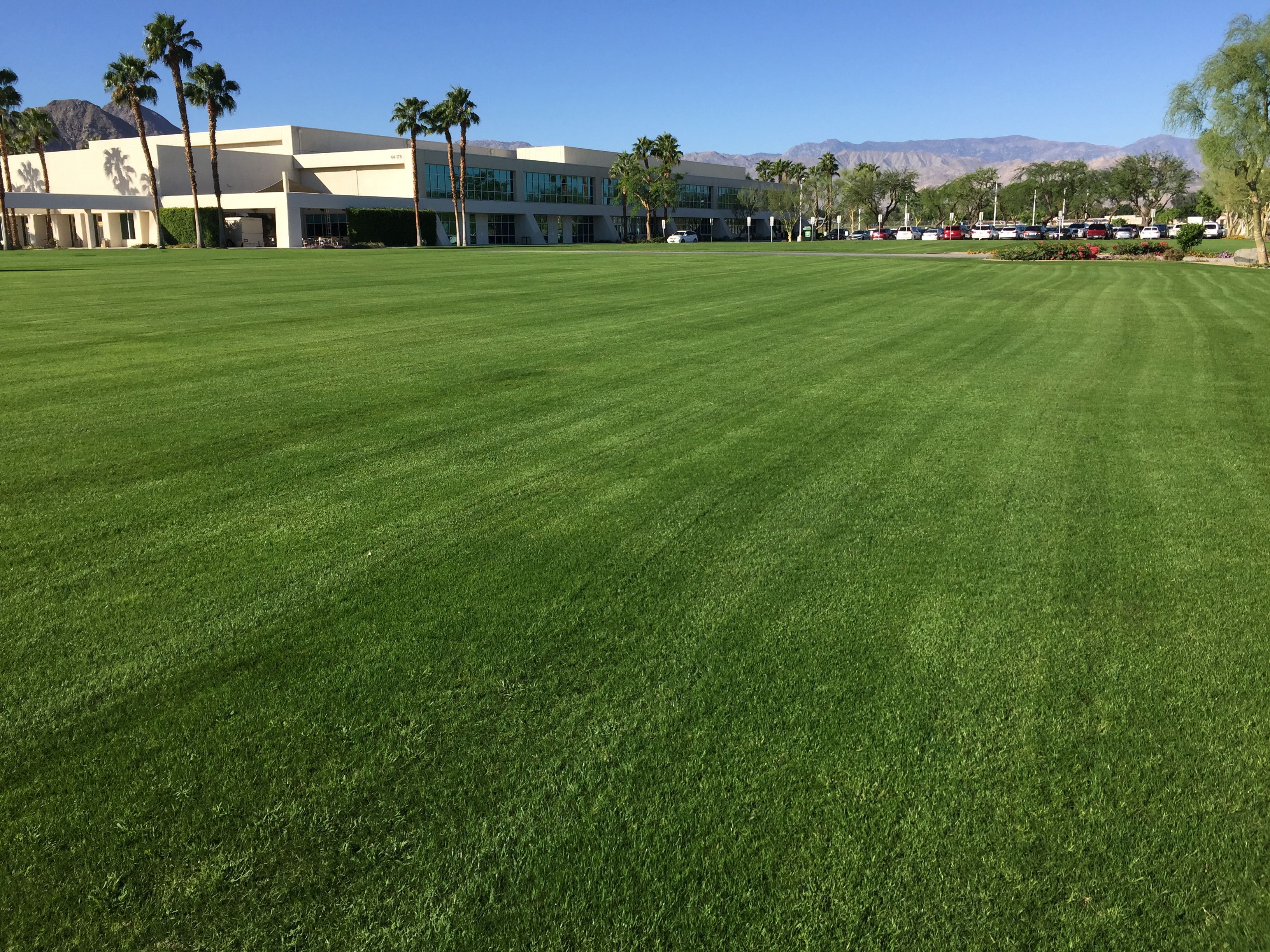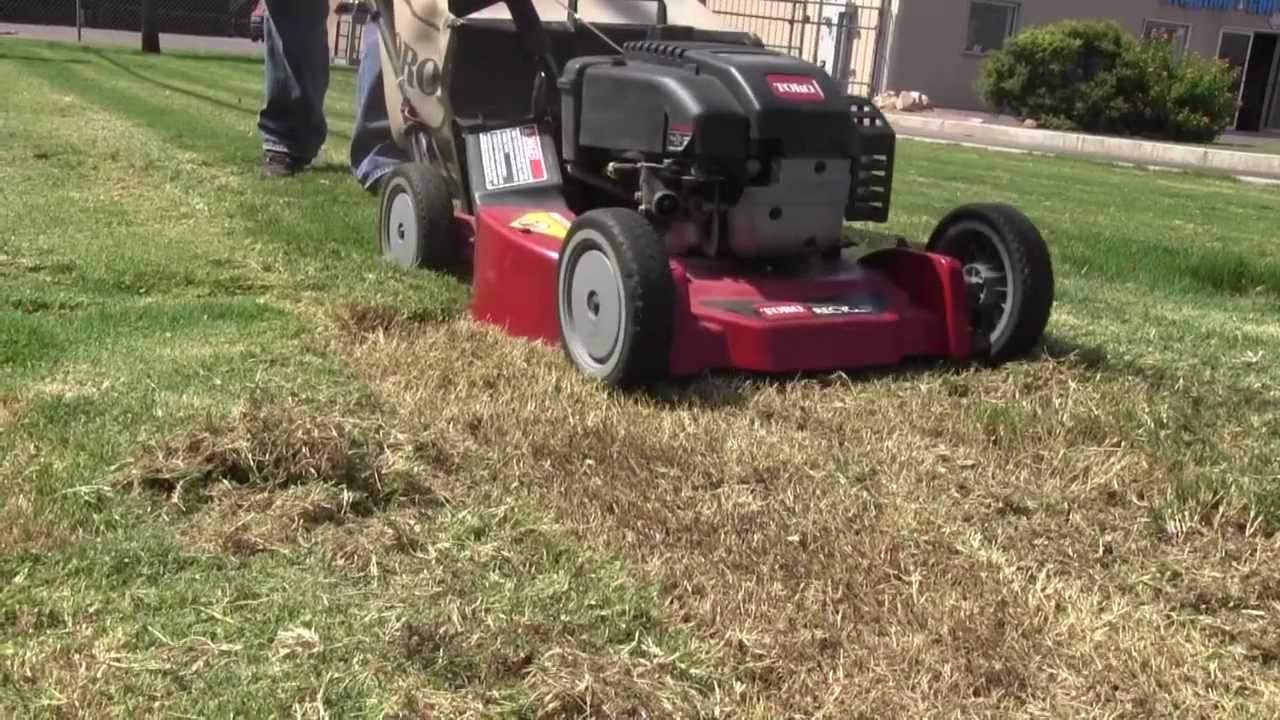Overseeding Time Is Here
Good to Know
Sep 7, 2017
By: Randy Mitchell, Director of Landscape Maintenance
It is that time of year again. Gradually, we are beginning to see some light at the end of the 'summer' tunnel. Hours of sunlight are shortening, nights are becoming cooler and daytime highs stay below the triple digit mark with more frequency. Soon enough winter will be here and with that comes the transition from our warm-season Bermudagrass to the cool-season Rye grass. Although this isn't a requirement, overseeding in the winter with Rye grass is a must if you want your community in peak condition. So let's get started with the 'Smart Scalping' procedures of the overseeding process. These standards were developed by the Coachella Valley Association of Governments to standardize the overseeding process and to minimize its impact on the air quality and environment.
Reduce Irrigation Times in Turf:
Approximately 4-6 weeks prior to seeding, irrigation watering times in turf areas are reduced gradually each week. This begins the process of weakening the Bermudagrass and encouraging it to begin its dormancy process.
Gradually Lower Mow Heights:
During this same time period, we will begin to lower the height of the mowing each week. This gradual reduction of the turf height over the course of several weeks minimizes dust, debris and particulate matter during the final scalping. All fertilization in turf areas is halted during this period as well- as the idea is to discourage aggressive Bermuda growth.
Irrigation Coverage Checks:
This is one of our irrigation technicians' busiest times of the year. To ensure good germination of the Rye seed when it is finally spread, it is essential that the irrigation be in good working order. 
Seeding with Rye:
Soil temperature will be the deciding factor in determining when to overseed. Typically, when evening temperatures consistently drop between 65-75 degrees the time is right to apply the seed.
Watering Schedule:
Once the Rye seed has been spread, watering times will be short and frequent. This means anywhere from 2-4 minutes every two hours for a total of 15-30 minutes per day. These times will vary based on the type of irrigation sprinkler heads. The idea here is to keep the seed moist throughout the day while it goes through the germination process. If there is any standing water, then you know there is too much water. As the new grass begins to grow, the frequency of the watering can be reduced while increasing the duration. The process from seed to a fully mature blade of grass should take anywhere from 30-60 days.
First Mow and Fertilization:
Once the Rye seed has germinated and watering times can be reduced, a first mowing will be completed. This typically is
When broken down into steps, the complete process isn't overly difficult. But, getting the scalping and overseeding correct on the first try is critical in setting the tone for the success of the community's landscape for the remaining portion of the winter. These upcoming winter months are the most critical as residents return to the valley. It is imperative that communities look their best. And let's be honest, properly germinating Rye seed after the weather cools down costs additional money, time and water. Having a business partner that understands this process and the importance of having the landscape shine its brightest when all eyes are on it can't be stated enough.
If you have any questions regarding the scalping and overseeding process or need any other professional landscape advice, please do not hesitate to contact us.
Conserve LandCare - Creating and Servicing Sustainable Landscapes for Tomorrow

